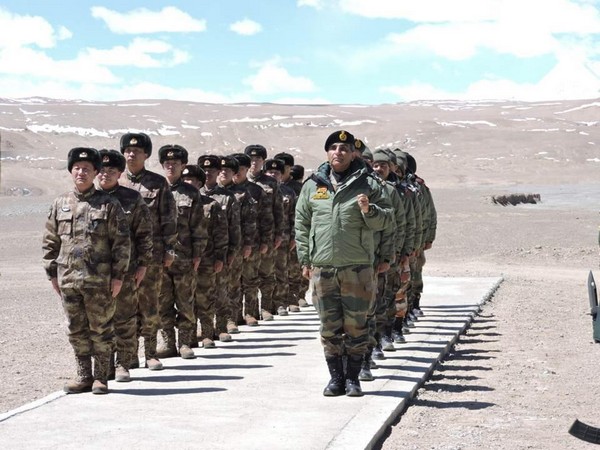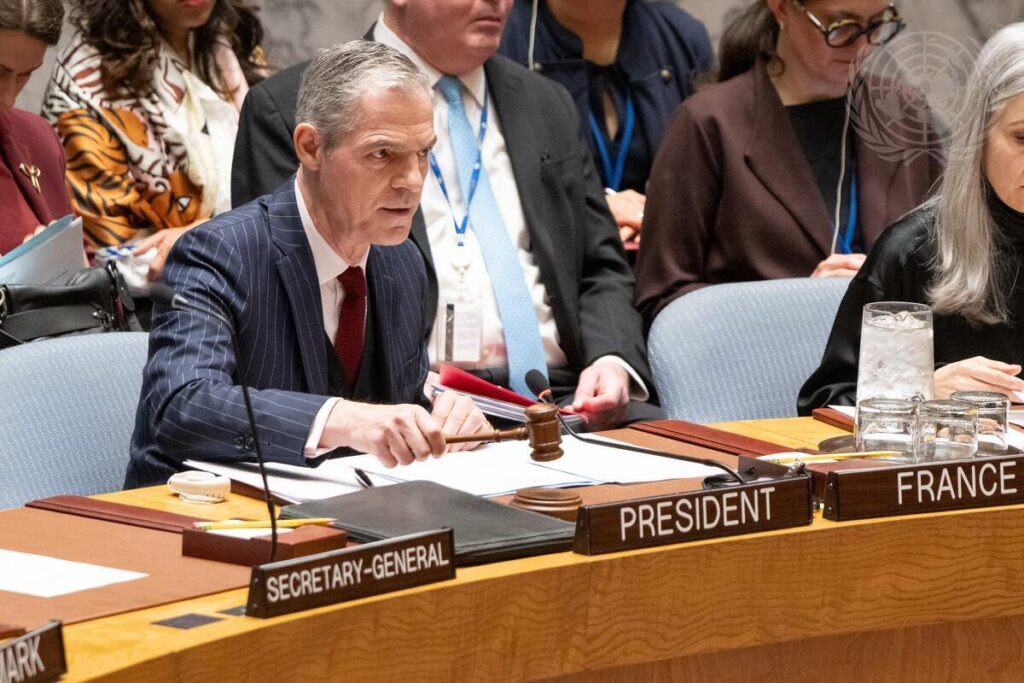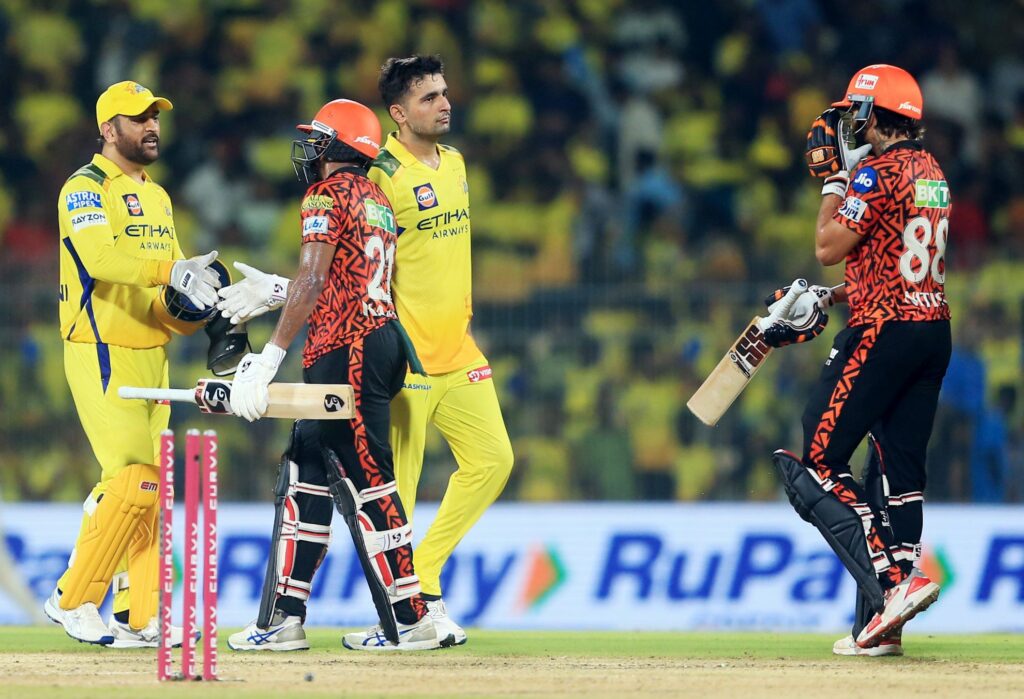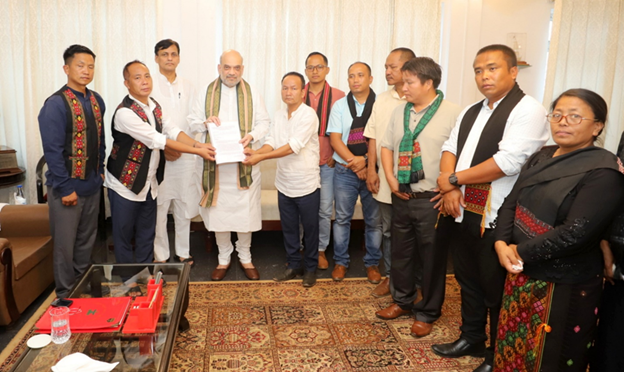Poised along the Indian border, Chinese troops are there for the long haul

The bloody conflicts in Ukraine and Gaza, along with the escalating tensions in the South China Sea, dominate news headlines. However, these issues often overshadow the fact that China’s People’s Liberation Army (PLA) continues to strengthen its position along the southern border with India.
In the Annual Threat Assessment of the US Intelligence Community, published earlier this year, border tensions between China and India were mentioned only briefly amid numerous global conflicts, threats, and tensions.
Nonetheless, the report assessed that “The shared disputed border between India and China will remain a strain on their bilateral relationship.”
It continued, “While the two sides have not engaged in significant cross-border clashes since 2020, they are maintaining large troop deployments, and sporadic encounters between opposing forces risk miscalculation and escalation into armed conflict.”
In April this year, the Strategic Studies Institute of the US Army War College published an in-depth report examining PLA activity along the mountainous border in Aksai Chin opposite India in 2020-21. The author, Dennis Blasko, primarily focused on how the PLA rapidly moved troops into the region as violence flared between Chinese and Indian troops in Galwan Valley on June 15-16, 2020. Blasko, a former US defense attaché in Beijing and Hong Kong, also provided a useful assessment of current and future conditions along the Line of Actual Control (LAC).
He assessed, “Barring negotiations with the Indian military and government to withdraw out-of-area combat troops, the PLA appears ready to maintain its deployments near the LAC in Aksai Chin and on the border at Doklam indefinitely.”
He continued, “In the case of Aksai Chin, due to the challenges of transporting large mechanized units over long distances, rotations of units into and out of the region will likely occur after a prolonged tour of duty (perhaps six months to a year or more). The situation has taken the form of PLA border operations against Vietnam following the 1979 war until 1987, albeit with fewer troops and less actual combat and artillery bombardment.”
He pointed out that the Chinese army’s “extended border reinforcement operations serve both political and military purposes and provide the units and staffs in the Western Theater Command with real-world operational and logistics experience that cannot be achieved through routine peacetime training.”
Unfortunately, little is known about how PLA units prepare for, assemble, and travel to and from their home bases to the LAC. Once in position, these units are sustained by supply depots more than 1,600km away. Incidentally, the Western Theater Command defends nearly half of China’s landmass with just a quarter of the PLA ground force’s total troops. The theater command possesses two group armies, plus the Xinjiang and Tibet Military Districts, which are equipped unlike any other PLA provincial military district.
Blasko made heavy use of Google Earth satellite coverage of the Aksai Chin area in his research for the US Army War College, and because some imagery is not up to date, he could not provide a reliable assessment of current deployments. He said, “Although China’s state media continues to report on units on the ‘front line’ or in ‘battle positions’ in the Karakoram region (without specifying Aksai Chin), it has done so without revealing the total number of troops deployed or their exact locations.”
Nonetheless, the former US officer assessed that “enough fortified positions were constructed in the various PLA-controlled sectors since the spring of 2020 to support a full division-size deployment—or roughly 10,000 personnel—on top of the two border defense regiments (approximately 5,000 personnel) already assigned to the region. Further, these units are reinforced by engineer, artillery, and support elements (probably numbering several thousand more personnel).”
In all, he calculated the PLA has approximately 20,000 soldiers arrayed over a 400km front in Aksai Chin, in a zone reaching back more than 32km from the LAC.
Furthermore, “This number may be higher during the period in which an out-of-area unit that has spent time on the LAC rotates out and is replaced by a fresh unit entering the area. Nonetheless, the 20,000 figure is a considerably smaller estimate of PLA personnel deployed in the disputed region than the 40,000-60,000 frequently asserted in non-Chinese media.”
Perhaps comfortingly, Blasko concluded that 20,000 troops scattered across such a broad front are “inadequate to conduct a large-scale offensive across the difficult terrain delineated by the LAC.” Any offensive would necessitate a build-up of units and supplies if the PLA were to attempt a substantial incursion beyond the border. For defensive operations, PLA doctrine recommends a divisional front that is 15-20 km wide and 20-30 km deep. For offensive operations, that front would narrow to be some 5-8km wide and 4-8km deep. Obviously, the disposition of Chinese troops along the LAC is nowhere close to that at present and, even at the peak of tensions in mid-2020, the front was in fact some 160km wide from Galwan Valley to Rechin La.
At that time, the PLA’s combined-arms regiment deployed to Galwan was lined up in a valley less than a quarter of a mile wide and separated by more than 50km from the nearest combat unit. Likewise, two combined-arms regiments in the south deployed over a 40km front, separated by Pangong and Spanggur Lakes, so they could not mutually support each other via land maneuvers.
Of course, the terrain in that rugged, high-altitude part of the world does not favor large-scale armored or mechanized combat operations. This is because mountains and valleys channel advances and prohibit lateral movement.
Asked about the terrain, Blasko told ANI: “I just don’t think they want to pack too many troops and vehicles into such bad terrain because they’d just make lucrative targets if fighting actually starts—lucrative to air, missile, or artillery attack. In a prolonged conflict, this is light infantry terrain where people will be trying to gain control of ridges, hilltops, and areas for long-range observation. In most areas, the new tanks and armored personnel carriers and everything else would really be constricted. This is a very, very tough place to operate, even when you have air and artillery support.”
Blasko also pointed out in his detailed report that “PLA units have been positioned to consolidate and hold territory, to conduct patrols and protect construction projects, and to create ‘facts on the ground,’ similar to the reef expansion operations in the South China Sea a decade ago.” Indeed, the PLA is “prepared to stay in the region for as long as it takes for the two governments to negotiate a solution.”
Actually, there are many similarities between China’s aggressive modus operandi along the Indian border and its nefarious reef-building and territory-grabbing activities in the South China Sea.
Speaking of which, the confrontation between the China Coast Guard (CCG) and the Philippines near Second Thomas Shoal on June 17 came precipitously close to armed conflict. It was the most serious confrontation ever recorded between the two sides, as CCG personnel attempted to prevent resupply of the Philippine military garrison on the beached BRP Sierra Madre vessel there. Chinese personnel operated extremely close to the grounded ship at Second Thomas Shoal, then wielded knives and an axe, and rammed a Philippine boat in an action that resulted in a Philippine sailor losing a thumb. China seized a Philippine rubber dinghy and confiscated firearms during the confrontation.
China claimed that the CCG exercised restraint and acted “professionally and reasonably” in this skirmish, despite extremely contrary video evidence released by Manila. China’s violent actions so close to the Sierra Madre, just short of boarding it, demonstrate how it is escalating tensions and testing Manila’s red lines. In fact, its seizure of another military’s boat could perhaps legally be construed as an act of war.
Earlier this year, President Ferdinand Marcos Jr warned that the Philippine-US Mutual Defense Treaty could be invoked if a civilian or serviceman is killed in these fiery exchanges in the South China Sea. Beijing is presently flirting with that possibility.









